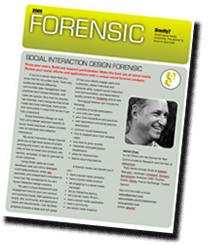There's an ongoing tendency to view these networks from a biological evolution point of view (memes, communication as transmission, etc). The metaphor doesn't work. It comes apart on the matter of "communication." Transmission (replication) in the biological word is duplication of information passed from one organism (or part) to another. Nothing is lost, everything is created, and information is preserved intact (excepting the case of mutations).
Human communication involves a linguistic medium, and involves meaning. Meaning is subject to a double contingency, which means that a speaker anticipates the hearer's interpretation, and that his utterance reflects this contingency. His utterance, in other words, is contingent on the contingency of the hearer's interpretation.
This handling of ambiguity, and the byproducts of interaction (emotional bonding, trust, etc) make human communication far more complex and wonderful than biological transmission. While MIT might be able to draw its topologies based on networks, and possibly even create another layer of interpretation based on proximity info, will they know what those relationships mean?
From smartmobs, some of MIT's questions:
"How do incoming students' social networks evolve over time?
How entropic (predictable) are most people's lives?
Can the topology of a social network be inferred from only proximity data?
How can we change a group's interactions to promote better functioning?
http://www.smartmobs.com/cgi-bin/mt/_tr4cKb4cK.cgi/4917




Comments: :
blog comments powered by Disqus
<< Home